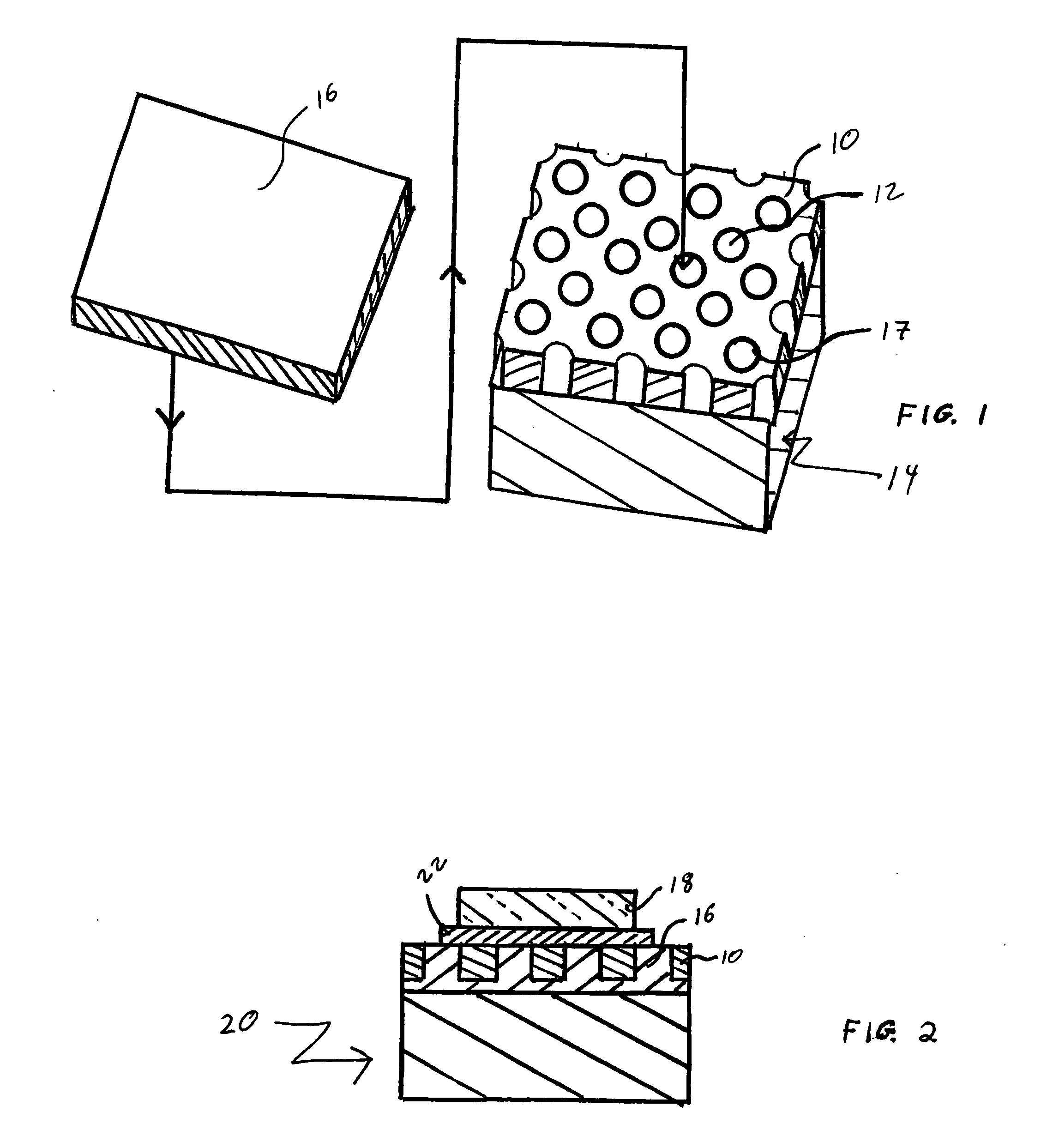Heat spreader for use with light emitting diode
a technology of light-emitting diodes and heat-spreading devices, which is applied in the direction of printed circuit aspects, transportation and packaging, chemical instruments and processes, etc., can solve the problems of reducing the use value of heat sink materials such as copper and aluminum, and reducing the efficiency of heat transfer, so as to achieve high thermal conductivity materials and increase tensile strength
- Summary
- Abstract
- Description
- Claims
- Application Information
AI Technical Summary
Benefits of technology
Problems solved by technology
Method used
Image
Examples
Embodiment Construction
[0019] With reference to FIG. 1, a relatively low coefficient of thermal expansion material 10, such as an iron / nickel-base alloy, is provided with an array of through holes 12. By relatively low CTE material, it is meant that the material has a coefficient of thermal expansion of less than 7 parts per million per degree centigrade (7 ppm / ° C.) over the temperature range of room temperature (nominally 22° C.) to 350° C. Suitable materials, having nominal compositions specified in weight percent, include the material sold under the trademark KOVAR, which is 29% nickel-17% cobalt-balance iron; the material sold under the trademark INVAR, which is 36% nickel-balance iron; and the material sold under the trademark ALLOY 42, which is 42% nickel-balance iron.
[0020] The through holes 12 are formed by any suitable process such as photolithography and occupy a minimum of 50% of the surface area of the low CTE material. More preferably, from 75 to 90% of the surface area of the low CTE mater...
PUM
| Property | Measurement | Unit |
|---|---|---|
| Temperature | aaaaa | aaaaa |
| Temperature | aaaaa | aaaaa |
| Fraction | aaaaa | aaaaa |
Abstract
Description
Claims
Application Information
 Login to View More
Login to View More - R&D
- Intellectual Property
- Life Sciences
- Materials
- Tech Scout
- Unparalleled Data Quality
- Higher Quality Content
- 60% Fewer Hallucinations
Browse by: Latest US Patents, China's latest patents, Technical Efficacy Thesaurus, Application Domain, Technology Topic, Popular Technical Reports.
© 2025 PatSnap. All rights reserved.Legal|Privacy policy|Modern Slavery Act Transparency Statement|Sitemap|About US| Contact US: help@patsnap.com


